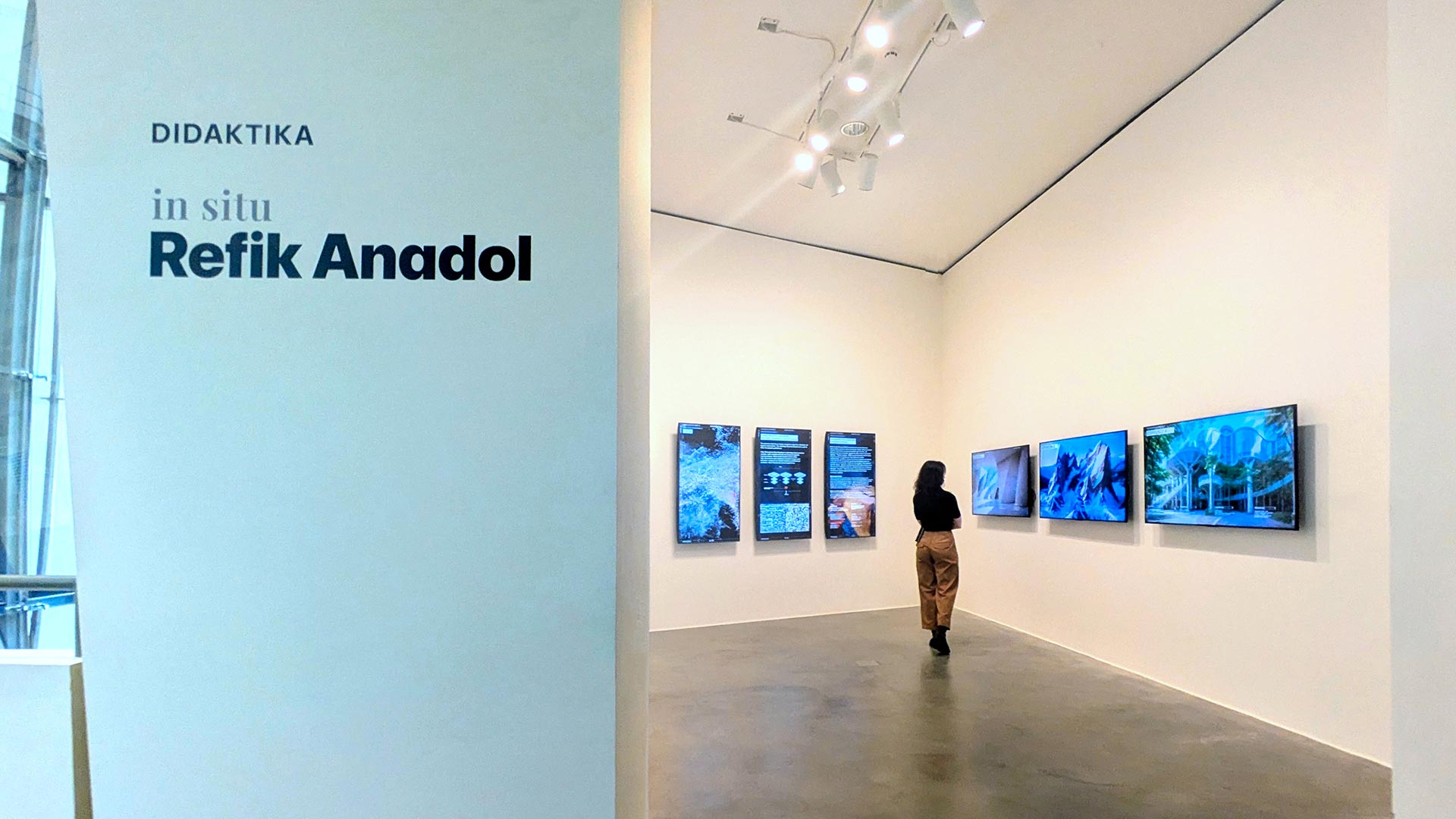
As part of the Didaktika project, the Museum designs on site educational spaces, online contents, and special activities that complement the exhibitions, offering tools and resources to aid appreciation of the works on display.
As a complement to the exhibition, the Didaktika space in Gallery 204 explores the complex processes behind Living Architecture: Gehry, Refik Anadol’s immersive artwork, exclusively crafted for gallery 208 as part of the in situ exhibition cycle.
Drawing inspiration from the architecture of Frank Gehry, the piece reinterprets the visionary’s legacy through generative artificial intelligence. The process is revealed through audiovisuals created by the artist’s studio. A vertical triptych of monitors situated in gallery 204 combines images and text to illustrate the creative process behind Anadol’s works, from a selection of millions of images that feed his custom AI model to the creation of the final output.
Central to Anadol’s process is the use of AI and machine learning, powered by sustainable computing, to analyze and interpret large amounts of data. The artist began by collecting a vast array of ethically sourced open-access data, architectural imagery, and graphic documents related to Frank Gehry’s works from the architect’s own studio. These materials, rich with structural complexity and artistic intent, serve as the foundation for the AI’s training process.
The images are then fed into an AI model that analyzes them and learns what they have in common. Because of the sheer amount of data, the AI must rely on various techniques to sort and organize them efficiently. The images are displayed in a 3D space that allows the viewer to visually understand how they relate to one another. Each small point in this visual is called a “datapoint,” representing a single piece of data, such as an image. Similar datapoints are grouped into “datasets”, forming clusters that reflect different facets of Gehry’s architectural language.
By combining these learned patterns with the artist’s refinements, the AI is able to autonomously generate entirely new images by ‘dreaming’ new possibilities—a process known as ‘machine hallucinations.’ A hallucination occurs when AI generates images or patterns that don’t exactly match anything it has seen before but are inspired by the data it has learned from. This phenomenon is represented on the three horizontal screens you’ll find in Gallery 204, displaying unique, speculative forms that fluidly blend into one another, echoing Gehry’s signature architectural style.
Anadol often describes his approach as using "data as a pigment," allowing him to reinterpret the creative process behind AI-based artworks and inviting audiences to experience data as an expressive and dynamic medium. A form of digital pigment that breathes new life into creative storytelling.
